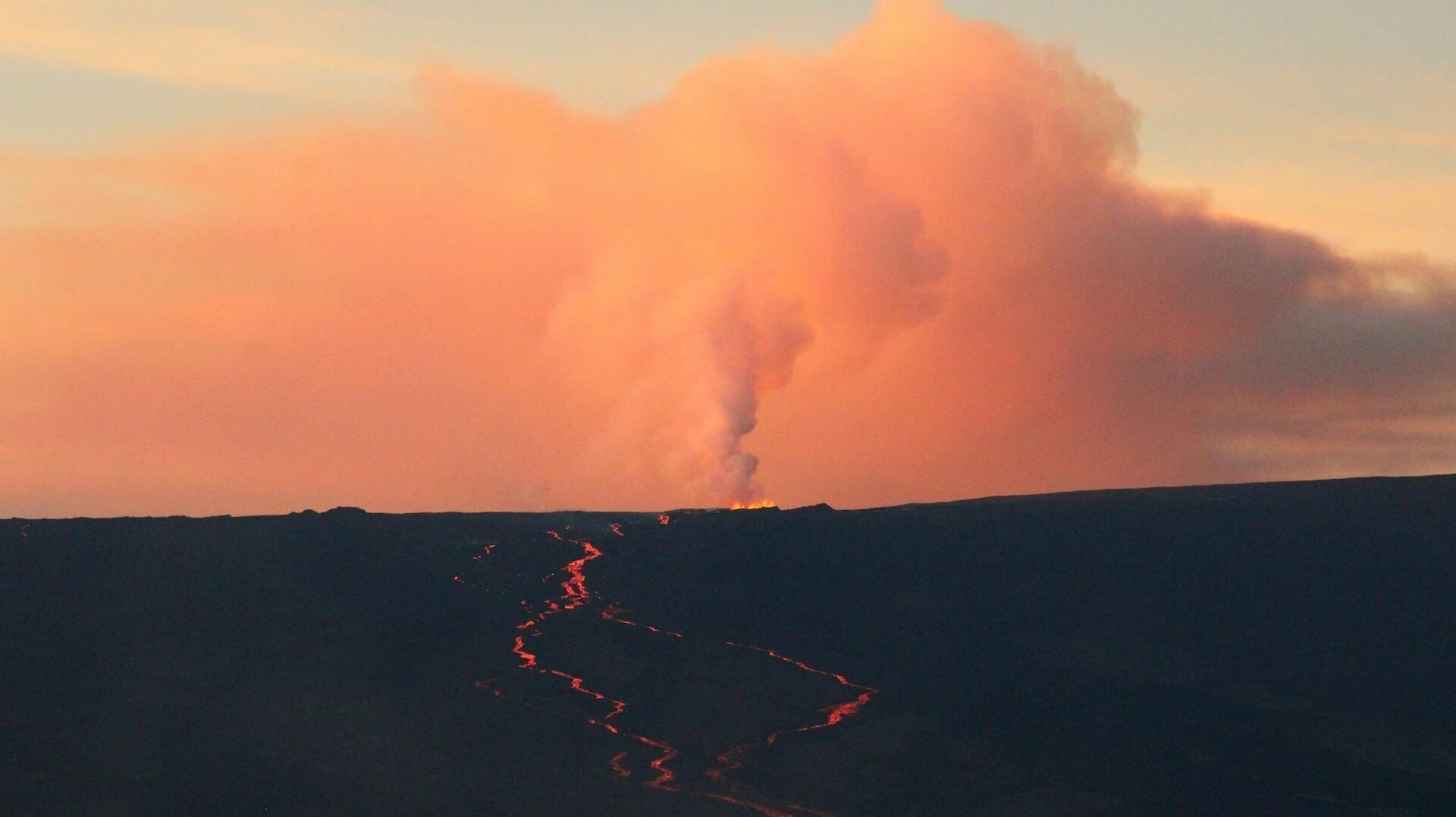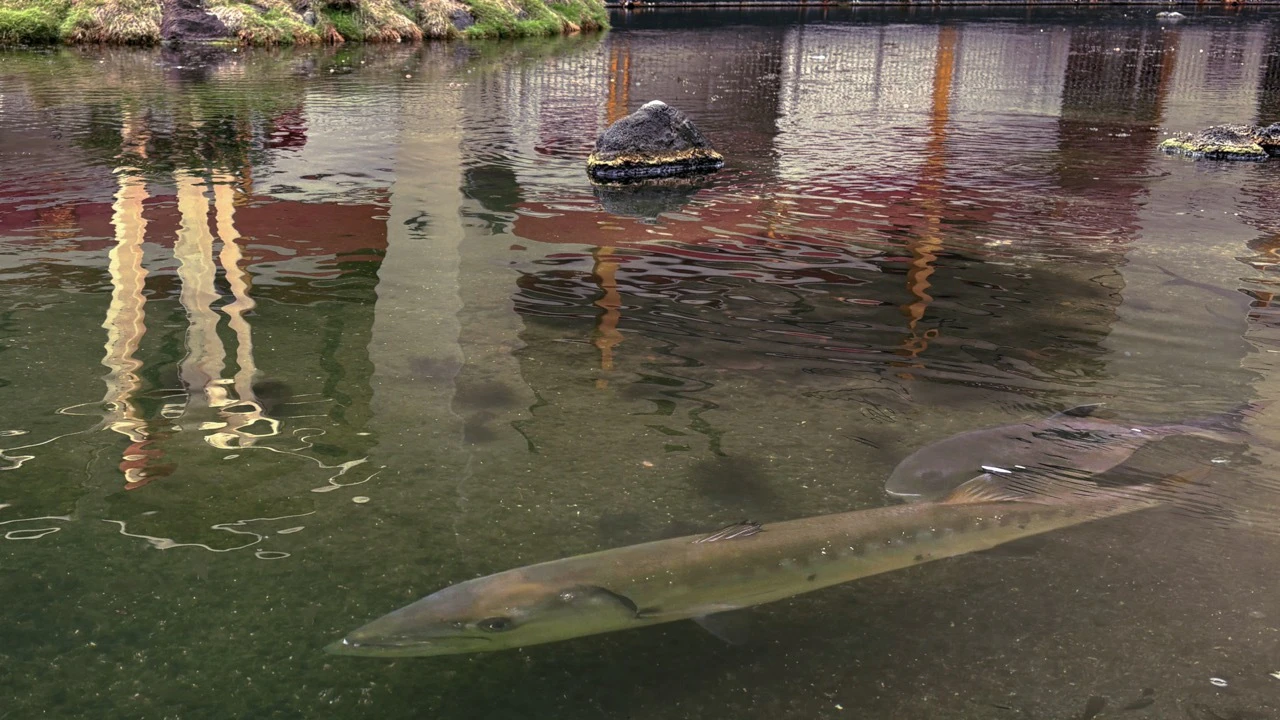For decades, Native Hawaiians have debated geothermal energy.
Can it be a solution to the high cost of electricity in Hawaiʻi and reduce our dependence on imported oil? Or is it tantamount to cultural and spiritual sacrilege and an affront to those ʻohana who trace their lineage to Pele?
Is it even possible for Hawaiʻi to achieve energy sovereignty without corrupting what is sacred?
For many Kānaka Maoli, geothermal development intrudes on sacred spaces and poses an existential threat to both cultural identity and environmental safety.
Opponents also express concerns that in the discussions around geothermal energy development, little regard is given to the familial relationship that some Native Hawaiians have to Pele, asserting that their religious beliefs are being dismissed.
Community organizer, advocate and small business owner Terri Napeahi has long maintained that geothermal energy production is a desecration. “A true Kanaka that honors Tūtū Pele, does not drill her for money.”
Other Native Hawaiians see it differently. To them, geothermal energy is a resource of liberation; an opportunity to lower energy costs, reduce the state’s reliance on imported oil, and achieve a form of self-determination.
“We would do well to harness her powerful energy to provide relief to the long-suffering residents of this island who have endured some of the highest energy costs for domestic and business use,” said attorney and activist Mililani Trask. “There is a way to tap into geothermal that will lower costs for electricity for home use and support the development of small businesses.”
The clash of perspectives is not new. Since the 1970s the very notion of geothermal development has engendered controversy.
Seeking energy alternatives
Embedded in state law HRS §269-92 and driving energy policy decisions in Hawaiʻi, is the goal of 100% clean energy production by the year 2045.
A 2025 Executive Order by Gov. Josh Green that mandates electric utilities on the neighbor islands achieve a 100% renewable portfolio standard by Dec. 31, 2035, is fueling even greater urgency among policymakers and energy producers.
One of the core challenges for Hawaiʻi’s clean energy transition is reliability. Solar and wind are considered “intermittent” energy resources, meaning they only generate power depending on the weather and the time of day.
Proponents point out that, unlike solar and wind, geothermal runs day and night, and energy grid operators can ramp it up or down as needed – which is why officials say it is both “firm” and dispatchable.
In addition to fossil fuels, “firm power” includes coal plants, nuclear reactors, and massive dams. Proponents of geothermal say that it offers Hawaiʻi firm electrical power without burning fossil fuels. But is the cultural cost too high?
For Trask, an unlikely champion of geothermal development, the stakes are about climate resilience as well as economic survival. “We can all agree on the urgent need to address the environmental challenges of our time and put our planet on a path to healing after decades of over-consumption and reckless disregard for nature. We owe it to our children.”
She believes that Hawaiʻi can be a leader in embracing renewable energy without disrespecting Hawaiian cultural traditions.
A history of opposition
Since the state drilled its first geothermal test well on Kīlauea’s East Rift Zone in 1976, there has been pushback. Groups like the Pele Defense Fund organized, testified, and went to court, arguing that drilling desecrated this wahi kapu and disrespected Pele.
“I lived next to the only geothermal plant there is in Hawaiʻi and it was a toxic facility that harmed the community and land,” said Napeahi, a longtime critic of geothermal development. “It is not renewable energy. This idea is a marketing pitch. But, most importantly, it’s the desecration of our beliefs.”
A flashpoint came in 1985 when the State of Hawaiʻi exchanged about 27,800 acres of public trust lands at Wao Kele o Puna for some 25,800 acres of land at Kahaualeʻa with the Campbell Estate. The estate wanted to use Wao Kele o Puna – the largest remaining native lowland wet forest in Hawaiʻi – to build a geothermal power plant.
This spurred mass demonstrations and landmark litigation.
In Pele Defense Fund v. Paty (1992), the Hawaiʻi State Supreme Court affirmed the state’s duty to safeguard Native Hawaiian customary practices when managing public trust lands. The ruling was a major victory for Native Hawaiian rights and a key precedent for subsequent cases, continuing to shape land use decisions today. In 1994, the Campbell Estate abandoned its project.
In 2007, Wao Kele o Puna was purchased by the Office of Hawaiian Affairs, in partnership with the Trust for Public land and with federal funding, protecting it in perpetuity.
Despite passionate opposition and the Pele Defense Fund v. Paty victory, the state’s first – and only – geothermal power plant, Puna Geothermal Venture (PGV), came online in 1993.
PGV operates on an 815-acre parcel of private leased land. Since then, it has consistently contributed to Hawaiʻi Island’s electrical grid. According to Hawaiian Electric, in 2024, Hawaiʻi Island received 19.1% of its electricity from geothermal energy.
Sacred spaces
For many Hawaiians, encroaching on Pele’s domain without her permission and the appropriate protocol is simply unacceptable.
“Our kūpuna, who were scientists and volcanologists, depict Pele as volatile, as vengeful, reckless, and uncontrolled,” cautions retired UH Professor Dr. Davianna McGregor.
“Her volatile force [only] becomes beneficial through her sisters. Life is brought back to the forest once lava is cooled and the forest regrows. Going into the earth to get geothermal energy disrupts that natural cycle; it filters out the dangerous nature of this entity, of this natural life force.”
This was borne out when the 2018 Kīlauea eruption shut down the PGV plant after lava isolated the facility. It has since restarted operations and is in the process of upgrading its facility with new and more efficient equipment. PGV claims these improvements will reduce its footprint from 12 energy-generating units to three and increase its power generation capacity from 38 to 46 megawatts.
“We have to be critical of the amount of money that’s being committed to technology which has proven in the past to be dangerous, unreliable, not renewable, and sacrilegious to those of us who honor Pele,” McGregor said.
Recent efforts to develop geothermal energy
In 2014, a Hawaiʻi Electric Light Company initiative to survey for expanded geothermal potential was met with more community opposition and litigation. In addition to ongoing cultural concerns, residents living near the existing PGV plant cited longstanding complaints about toxic hydrogen sulfide gas emissions. Ground water quality is another concern.
More recently, the Department of Hawaiian Home Lands (DHHL) has moved forward in seeking geothermal resources on Hawaiian Home Lands. DHHL stewards over 200,000 acres of trust lands and is exploring the prospects of developing geothermal resources on Hawaiian Home Lands on Hawaiʻi Island, Maui and even Oʻahu. The department has sought federal and state funding to support its ongoing investigation, exploration, and identification of geothermal resources.
With its kuleana to return Hawaiians to the land and to manage its resources in ways that advance the economic self-sufficiency of its beneficiaries, DHHL is emphasizing that a geothermal project on trust lands will provide benefits to its beneficiaries.
Napeahi disagrees. “There are other, cleaner alternatives. There is no gray area when money and politics compromise who we are as a Native people. It’s not an issue of Hawaiian against Hawaiian. It is the Hawaiians against the corporations.”
Bobby Camara retired a few years ago from Hawaiʻi Volcanoes National Park. He, too, is skeptical about DHHL’s plans. He said that the chemistry of lava varies in different places and it’s hard to predict what will happen when you start drilling – and there is always the potential for unintended consequences.
“There’s no magic in geothermal,” Camara commented. “It’s not like you’re going to drill a hole, make a well, and suddenly make a billion dollars to build houses for people. Don’t even think of dealing with geothermal until you get people in houses on the land.”
Waikā Consulting, a Native Hawaiian-led organization formed in 2022, has been tasked to lead Hawaiʻi’s “transition to geothermal energy development.” It has adopted the role of cultural intermediary and community partner.
Working under state contracts, Waikā Consulting has facilitated outreach efforts across Hawaiʻi Island, conducting workshops, and initiating online communication efforts to promote a “Native-to-Native” framework for geothermal development modeled after similar projects in Aotearoa (New Zealand).
Former state senator Dr. Mālama Solomon supports this approach. “Energy is key to economic development,” she said. “Without affordable energy, our people cannot live comfortably and start or grow new businesses. It’s that simple.
“In all my decades of living on Hawaiʻi Island and watching geosciences research being conducted, I never saw it done with a view to embark on commercial development of geothermal energy. That’s what makes Waikā’s approach different from any other.”
Waikā asserts that its “Native-to-Native” model centers on trust-based engagement. They describe this approach to development as an overturning of the typical extractive model, where foreign investors take the lion’s share and leave the community with little in return.
“The idea is to generate benefits in terms of education, opportunity and revenue that will last for generations,” Trask said.
Waikā contends that developing geothermal energy can be an exercise in Native Hawaiian agency over Indigenous resources that the law says belong to Native Hawaiians and the public.
At a crossroads
Humanity is at a crossroads. As we become ever more dependent on technology and accustomed to the comforts and conveniences of modern life, our collective energy use will continue to accelerate exponentially.
Rising fossil fuel costs and the grim reality of climate change means that the push for alternative sources of energy production will remain a pressing, critical issue.
Here in Hawaiʻi, some Kānaka believe that geothermal represents a path forward to greater self-reliance, sustainability, jobs, and a measure of justice for Native Hawaiians who have long carried the burden of development in their communities without receiving any direct benefits.
Other Kānaka see geothermal as an expression of disregard for their cultural traditions, spiritual beliefs, and ancestral lineage; the continuation of an extractive economic system in which decisions are made without respect for culture, religion, or the concerns of the impacted community.
For now, the path forward is uncertain.
This article is reprinted with permission from Cedric Duarte, “Geothermal Energy: Solution of Sacrilege,” Office of Hawaiian Affairs’ Ka Wai Ola newspaper, September 2025, Vol. 42 No. 9. Read more at kawaiola.news.
For the latest news of Hawai‘i, sign up here for our free Daily Edition newsletter.





